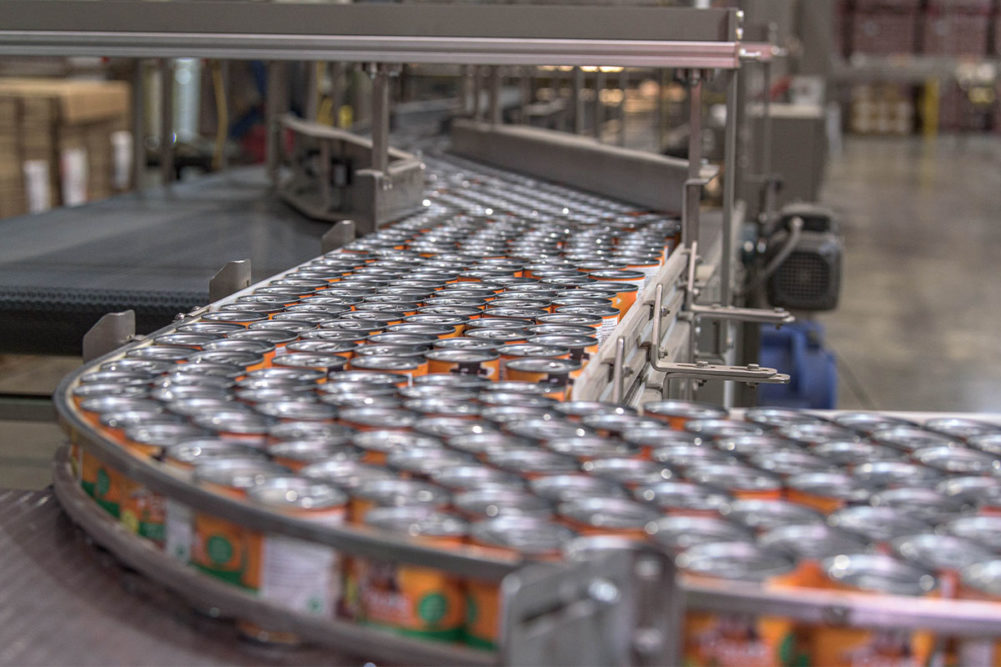This article was published in the March 2023 issue of Pet Food Processing. Read it and other articles from this issue in our March digital edition.
|
|
The United States is a pet-centric country. In 2021, 70% of US households (84.9 million households) owned some sort of pet, according to the American Pet Products Association (APPA). Of those pet-owning households, 54% owned a dog and 35% owned a cat — which amounts to Americans owning 186 million dogs and cats. In order to feed this growing number of four-legged companions, the APPA’s State of the Industry report showed US pet parents spent $50 billion on pet food and treats in 2021.
All of this translates into a booming industry for pet food and treat manufacturers that shows no signs of slowing down.
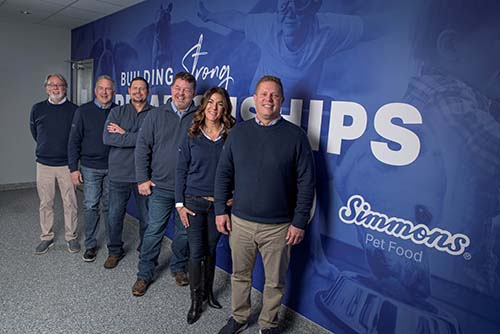
Leading the way in wet pet food production is Simmons Pet Food — the largest private-label and contract manufacturer of wet pet food in North America. A subsidiary of Siloam Springs, Ark.-based Simmons Foods, a vertically integrated family-owned food company producing poultry, pet and animal nutrition products since 1949, Simmons Pet Food operates manufacturing facilities in Northwest Arkansas, Emporia, Kan., Dubuque, Iowa and Ontario, Canada. With a recent exit from dry pet food and pet treat production, the company has set out on a $500 million strategic capacity growth plan to focus solely on wet pet food.
“A couple of years ago, we put together a growth strategy,” said Scott Salmon, president of Simmons Pet Food. “As we worked through the strategy, we realized we weren’t in the position to win in treats and dry pet food, so it came down to choices. For us, we have a great seat at the table in wet pet food — we’re a leader in the industry. We’re the largest co-manufacturer. We’re the largest private label manufacturer. And it’s seen such tremendous growth that we were cutting our resources down by staying in the treats and dry pet foods business.
“We developed a new strategy as we went into 2021, and with that strategy, we had planned on, and are now fulfilling, a commitment to $500 million in capacity investments,” he said. “And by the middle of 2024, we will be well on our way to meeting that goal.
“We’ve done a series of investments that are significant that hopefully show our commitment to the communities, to our team, to the industry and, most importantly, to the pets we love.”
Capacity driven
Last July, Simmons unveiled its latest expansion plans — to add a fourth high-speed canning line at its Emporia, Kan., facility, add a new pet food distribution center in Edgerton, Kan., and start up a second canning line in its Dubuque, Iowa, plant — all of which were designed to take the company’s annual sales beyond its current $1.2 billion.
“We’ve seen double-digit growth for the past three years — over $1.2 billion in sales — and we don’t see our growth trajectory slowing down at all in 2023,” Salmon said. “That growth trajectory is why we’re putting in line four in Emporia, beginning construction in 2024, for completion in 2025.”
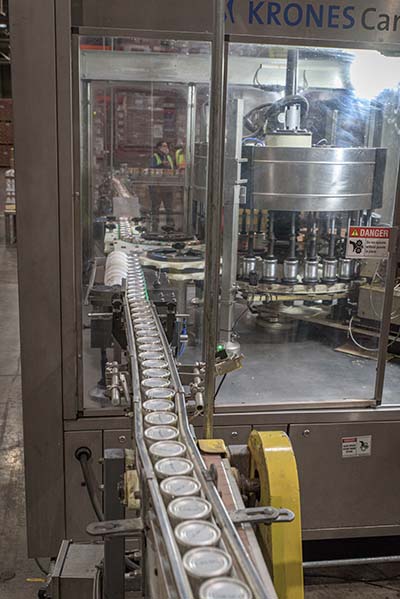
The company’s Emporia facility has been in operation since 1998, beginning with one line and employing 250 people. Today, the campus includes a separate Flex plant, which was built in 2019 to produce wet pet food in pouches, cups and tubs, in addition to the canned pet food plant next door and a warehouse — a combined 1 million square feet under roof. The combined Emporia operation now employs more than 1,500 people in full- and part-time positions.
Ever since the Flex plant was added in 2019, the Can plant has focused solely on producing canned items on its current three lines, and all other product for pouches, cups and tubs was moved over to the two production lines at the Flex plant.
The fourth production line in Emporia will be capable of producing 60,000 lbs of canned product per hour. This expansion will increase the plant’s total annual output to more than 70 million cases after the line is up and running.
In addition to the new fourth line, the company has invested over $30 million to increase the speed of its 3-oz canning line by 50% and increase the speed of its cup packaging line in its Flex plant by 50%.
Simmons wet food selections include loafs and pâtés, meat cuts in gravy, shredded meat, fish and poultry, and broths and purees. Product is packaged in 3-oz and 5.5-oz aluminum cans; 5.5-oz, 13.2-oz and 22-oz steel cans; 3-oz, 3.5-oz and 5.3-oz pouches; and 2.7-oz, 3.5-oz cups in addition to split cups.
"Our mission is to nourish and delight the pets we love by being the most trusted partner in the industry," said Scott Roberts of Simmons Pet Food.
Category management analysis and market research has shown that over the last five years ending in 2022, the wet pet food category has annually grown faster than the dry pet food category. Chicago-based market research firm IRI reported that the wet dog food category grew 14.2% from August 2021 to August 2022, and wet cat food grew 14.4% over the same time frame — compared to 12.3% and 13.2% growth for dry dog and cat food, respectively.
“As we go and talk to co-manufacturer customers and when we talk to retailers, we don’t just walk in say ‘What do you want us to make?’ We walk in with a category review. We are providing that category management expertise,” said Scott Roberts, senior vice president of business development and sales operations.
“We have a category that continues to grow,” he added. “We are expanding our capacities as fast as we can to respond to demand — we’re driving new capabilities as fast as we can… We have co-manufacturers that come to us and talk to us about future-forward innovation. We’re in a unique position as an industry advisor to help with that innovation.”
Last summer, Simmons continued its multi-phase expansion with the addition of its second line to its Dubuque, Iowa, canning plant. The 275,000-square-foot plant opened in July 2021 following a $100 million investment. Each line in the Dubuque plant has the capacity to produce 30,000 lbs of canned product per hour.
Rounding out its $500 million expansion plan is the company’s investment in packaging automation at its new 1 million-square-foot distribution hub in Edgerton. Product from its Emporia, Dubuque and Streetsville, Ontario, locations will be shipped to the warehouse, sorted into multi- and variety packs and distributed to customers and retailers nationwide from one singular site. The centralized distribution center will provide much-needed warehouse capacity, as well as streamline the distribution of highly sought out variety packs of wet dog and cat food.
|
|
Industry expertise
“Our mission is to nourish and delight the pets we love by being the most trusted partner in the industry,” Roberts said.
As a company that produces food not only for pets but for humans as well, Simmons has the unique capability of being able to tap into research and development expertise from both sides of the aisle. While the companies are separate entities, knowledge is shared across sectors on a regular basis.
“We feed both families and the pets they love — we’re in a really unique position,” said Craig Bacon, Ph.D., senior vice president of technical services. “We’re a large manufacturer to a lot of the foodservice industry and, likewise, we’re providing innovation to them.”
The innovation on the pet food side often mirrors what’s being done on the human side of the business.
Leah Lambrakis, vice president of research and development, nutrition and scientific affairs, leads a team of 30 scientists driving pet food formulation and innovation with a focus on nutrition and process engineering.
“We have made a significant investment to get the right people to be able to do the work to meet our customer needs,” Salmon said. “The Simmons team is resourced to win.”
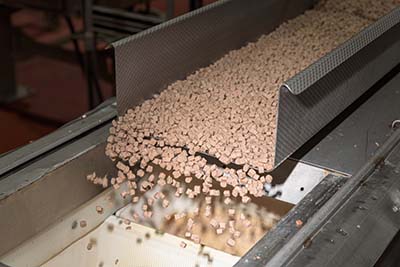
Keeping abreast of industry trends and nutritional developments helps Lambrakis’ team meet current and potential customers’ needs.
“We definitely follow the trends, not just in pet food, but on the human food side as well. When you think about functional nutrition, clean label, transparency, alternative and unique ingredients, that’s all being done in human food as well as in pet food,” Lambrakis said. “What we see more of is an increased interest and focus on elevating or enhancing the bowl. Pet parents are taking more interest in proactively caring for the health of their pets, and product brands need to respond to that so they can differentiate themselves in the market.”
The R&D team not only works on customer-driven projects where customers directly request a certain formulation or product style following strict nutritional parameters, but also leads innovation that could ultimately yield new product offerings for the Simmons portfolio.
“Our team really takes an interest in being creative, innovative and curious,” Lambrakis said. “We will see something in the human food industry, and we’ll ask, ‘Can we turn that into pet food?’ We work on a number of internal innovation projects so we’re more prepared for when customers come to us with requests.”
The R&D team is not only responsible for developing new products and finetuning existing formulations; they are charged with ensuring the product meets nutritional guidelines and regulatory requirements. Alongside these tasks, the team also has to make sure the production of the new product can easily be incorporated into the processing line. And when supply chain challenges hit, like those of the past couple of years, the department is often challenged with creating additional solutions for their customers.
“We’re a full-service, technical service team right from concept to creation, formulation, prototyping to scale up and then commission in our plants,” Lambrakis said. “From a technical perspective, we have multiple areas that the product has to go through. First formulation, then a comprehensive nutritional and regulatory review — ensuring the product is not just complete-and-balanced but created so the animal can thrive — then a thermal process sign-off. The Regulatory team has to review the product proposal versus the label versus the regulatory requirements. The product then moves on to artwork and packaging to make sure everything on the package can be said and is valid and substantiated. Finally, we work closely with Operations and Quality to ensure the formulation we have built in concept, is process capable in our plants — this partnership is critical.”
Meeting demand
The humanization and premiumization of pet food, once seen as an industry trend, but now more often seen as standard practice, is dictating product development and even guiding innovation. R&D professionals, like those on the Simmons team, are going beyond the bowl when creating new product selections.
“Today we say pet parent — we no longer say pet owner — because pets really are part of the family. Humanization has shifted the way we purchase for them, the way we feed them, the way we delight them — it’s gone beyond a trend now,” Lambrakis said. “It’s now a feeding experience. It’s about preparing food for your pet.
“We’ve created purees, toppers with shreds of chicken, fish and vegetables. The pet parent really feels like they’re part of that feeding experience of delighting their pet.”
Having the capability to package the wet pet food into various formats such as cans, pouches, cups and tubs provides the product development team with additional formulation flexibility. Some products are packaged in multiple formats to provide convenience to the consumer — such as wet food in pouches and cups rather than cans for ease when traveling — while other formulations such as purees are simply best suited for pouches.
“Our insights of how today’s pet parents are feeding their pets have led us to invest and expand in different areas of product and packaging formulations,” Salmon said.
Running a co-manufacturing operation offers its challenges on the production line when it requires different products for different customers one after the other in the production cycle. But Simmons sets itself up for success with flexible equipment, automation and operations expertise.
"The pet parent really feels like they’re part of that feeding experience of delighting their pet," said Leah Lambrakis of Simmons Pet Food.
“It presents a challenge — running different products for different customers,” said Brian Potter, vice president of operations. “When we are talking about different customers, we are talking about totally different formulations. We are changing from one size of package to another, to a different ingredient format, to a different protein source, throughout the day to meet those customer needs.
“A lot of our ability to get that done goes back to the equipment capability and our team always trying to be innovative,” he added. “We’re constantly challenged and looking for better and quicker ways to be able to move from one formulation to the next.”
Like all manufacturers, Simmons faced its share of obstacles during the last few years since COVID-19 hit. First production stalled during the pandemic, followed by supply chain disruptions and now economic inflation.
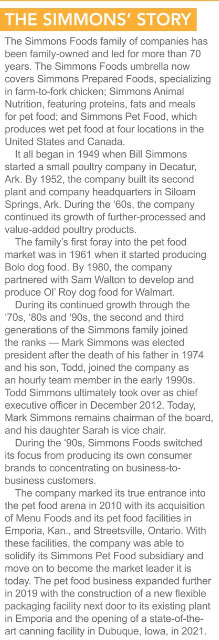
“The last two years have been very challenging, but I think we’re doing an exceptional job,” Salmon said. “Why? We’re constantly talking to other companies, focusing on demand-driven forecasting.
“And I think we have done a tremendous job of staying ahead of the labor shortage problem. We have made substantial investments in our team members with salary and benefits, such as our own care clinics for employees and their families.”
The company has also invested heavily in automation to help ease the labor shortage stress. There will be more automation in the packaging areas of the Can and Flex Emporia plants, as well as in the new distribution center in Edgerton.
“We’ve invested quite a bit on automation, however, we’ve been able to do that as we’ve grown, so it hasn’t driven any employee cuts or layoffs,” Salmon explained. “It’s playing a critical role in our company-wide expansions. Most of our automation is just now getting in place or being put in place over the next 12 months.”
Simmons Pet Food’s recent $500 million investment into its production capacity is a corporate vote of confidence that the company will be able to maintain its foothold as the leader in wet pet food production, with over 1.4 million square feet of manufacturing space, more than 2,000 employees and one common mission leading the way.
“We love pets. Our passion for pets is why we have millions of square feet of production and new capabilities,” Salmon said. “We are very proud of our network, our capabilities, of our people — why we’re here is to bring the people and pets we love together through food.”
|
|
Read more of our exclusive pet food and treat processor profiles.
